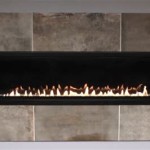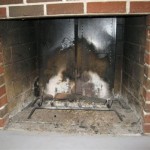Salvaged Fireplace Surround: A Sustainable and Stylish Choice
The fireplace, historically the heart of the home, continues to be a focal point, offering warmth and aesthetic appeal. While modern fireplaces feature diverse designs and fuel sources, the surrounding mantel remains a significant element in defining the room's character. Salvaged fireplace surrounds offer a compelling alternative to new construction, combining sustainability, unique character, and potential cost savings. The process of salvaging allows homeowners to incorporate a piece of history while reducing environmental impact.
Salvaged fireplace surrounds encompass a wide variety of materials, styles, and origins. They might be crafted from wood, stone, brick, or metal, each providing a distinct visual and textural quality. The style can range from ornate Victorian-era carvings to the clean lines of mid-century modern designs. Understanding the benefits and considerations involved in sourcing and installing a salvaged surround is crucial for a successful project.
Sustainability and Environmental Benefits
One of the most significant advantages of opting for a salvaged fireplace surround is its contribution to environmental sustainability. The construction industry is a major consumer of raw materials and a significant contributor to waste. By choosing salvaged materials, homeowners actively participate in reducing the demand for newly manufactured products. This, in turn, lessens the environmental burden associated with resource extraction, manufacturing processes, and waste disposal.
Salvaging prevents usable materials from ending up in landfills, where they contribute to greenhouse gas emissions and soil contamination. Reusing an existing fireplace surround extends its lifespan and avoids the energy expenditure required to create a new one. This embodied energy, the energy consumed throughout the product's lifecycle, is a critical factor in assessing environmental impact. Investing in salvaged materials represents a conscious effort to minimize one's carbon footprint and promote a circular economy.
Character and Uniqueness
Unlike mass-produced fireplace surrounds, salvaged pieces often possess a unique character and inherent imperfections that contribute to their charm and authenticity. These might include aged patinas, subtle variations in color and texture, or the evidence of skilled craftsmanship from a bygone era. These details add depth and visual interest to a room, creating a sense of history and individuality that is difficult to replicate with new materials.
The stories behind salvaged fireplace surrounds can also be a compelling aspect of their appeal. Knowing the origins and history of the piece adds another layer of appreciation and conversation. Imagine a surround crafted from reclaimed barn wood, each knot and grain telling a tale of the building it once housed. Or a marble surround salvaged from an old hotel, whispering stories of past guests and grand events. These historical connections enrich the home’s narrative and provide a unique focal point.
Sourcing and Installation Considerations
Sourcing a salvaged fireplace surround requires careful planning and research. Architectural salvage yards, antique stores, and online marketplaces are potential sources. It’s vital to examine the surround thoroughly for any damage, such as cracks, rot, or structural weaknesses. Understanding the material and construction methods used in the original piece can help assess its suitability for the intended application.
Before purchase, accurate measurements of the fireplace opening and the surrounding wall space are essential. The salvaged surround must fit properly and securely. Consider the weight of the surround and whether additional structural support is needed. Depending on the age and condition of the surround, professional installation may be required. A qualified contractor can assess the structural integrity, ensure proper venting, and address any potential safety concerns. Additionally, local building codes and regulations regarding fireplace installations must be adhered to.
Restoration is often a necessary step in integrating a salvaged fireplace surround into a modern home. This might involve cleaning, repairing minor damage, and applying a protective finish. The goal is to preserve the original character of the piece while ensuring its longevity and functionality. A professional restorer can provide expert advice and services to achieve the desired aesthetic and structural integrity.
Integrating a salvaged fireplace surround into a home embodies a commitment to sustainable design principles and a passion for unique, historically rich pieces. Careful planning, meticulous sourcing, and professional installation are vital for a successful project. The result is a fireplace that serves as a testament to craftsmanship, history, and environmental awareness.
Ultimately, the value of a salvaged fireplace surround extends beyond its aesthetic appeal. It represents a conscious decision to reduce waste, preserve history, and create a home environment with character and meaning.

Architectural Salvage Old Mantle

Restoration Resources New England S Primary Source For Authentic Architectural Antiques Wood Mantels Section

Tall Antique Oak Fireplace Mantel 54 5 X 78 Architectural Salvage

Vintage Fireplace Mantel Recycling The Past Architectural Salvage

Salvaged Mantel Installed Maggie Overby Studios

Mantels Heritage Salvage Petaluma

Old House Parts Company Architectural Salvage Antique Windows And Doors Hardware For Interior Exterior Home Improvement

Antique Fireplace Mantel Surround Architectural Salvage Victorian Rustic A121 Mantle Columns Legs Wooden

Old House Parts Company Architectural Salvage Antique Windows And Doors Hardware For Interior Exterior Home Improvement

Restoration Resources New England S Primary Source For Authentic Architectural Antiques Marble Mantles Section
Related Posts








